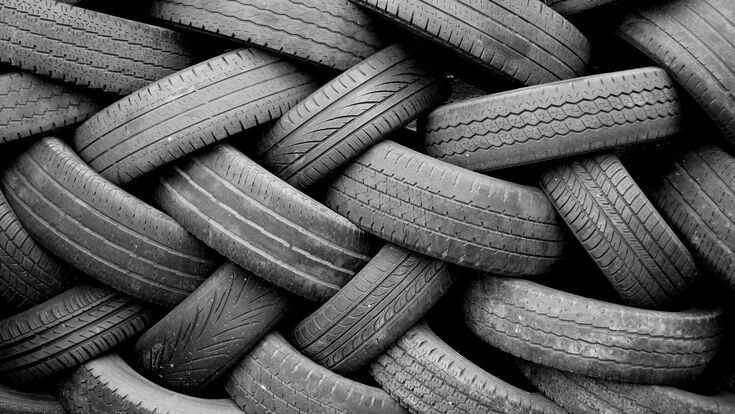Integrating sustainability and circularity into purchasing decisions for greater transparency in the value chain : The ConCirMy configurator informs about the sustainability aspects of products

Globally, an estimated one billion tyres arise each year[1]. Whilst recycling of tyres is generally well developed (in Germany, around 50% of the EOL tyres by weight are mechanically recycled[2]), only a small fraction of the rubber recyclates is currently fed back into the material cycle to produce new tyres. The ConCirMy project investigated whether and how tyres can be optimised regarding the goals of the Circular Economy without compromising on product quality, i.e. the performance of the tyres when used. For the analysis of the value chain, the product lifecycle of tyres from raw material to recycling technologies was investigated and recycling possibilities and recovery routes of recyclates from tyres were identified. Framework conditions for the implementation of a more circular supply chain were identified and recommendations for action were formulated.
In parallel, the team worked on the development of a digital tool (configurator software) that can provide the various stakeholders in the supply chain with information on the environmental performance of the tyres. The information can then be considered e.g. in purchasing decisions. Ultimately, the tool aims to support the production and purchase of more sustainable products, the development of more environmentally friendly designs and the move towards recycling and reuse. The idea is that the information provided by the tool will be accessed by different user groups situated at different levels in the supply chain – consumers, designers, and recyclers – and considered in decision-making. For the development of the configurator prototype, a set of generic tyre models was developed to serve as exemplary life cycle inventories and form a basis for the product configuration. A cloud-based prototype was developed to support the (purchasing) choices for car tyres, with an interface for retrieving data from enterprise resource planning (ERP) systems. Having this interface is a key enabler for the future use of the configurator for a larger number and complexity of products.
[1]WBCSD( 2021): End-of-life tire (ELT) management Toolkit
[2] UBA (2019) https://www.umweltbundesamt.de/altreifen, accessed 16th August 2023
Optimising the configurator
To optimise the development of the configurator, several supporting research activities were undertaken: Socio-economic analyses were conducted to learn about consumer preferences and the demand for bio- and circular economy-based automotive components. Recommendations were derived for the various players in the tyre supply chain and business models were developed for the successful implementation of the circular system. Furthermore, the need for standards to support the development of the supply chain towards a Circular Economy was examined and a data format for the exchange of LCA results for the configuration of modular variant-rich products (German specification “DIN SPEC 91474”) was developed on that basis.
Related articles: Project praxpack – making e-commerce more sustainable by reusable packaging, Innovative product cycles for a circular economy
Contribution to resource efficiency and sustainability
At different stages of a product's life cycle, approaches towards a more circular economy, such as design for recycling or an extension of the use phase, can be applied. Digitization has great potential to help achieve circular economy and resource efficiency goals, since access to information about products and materials can be provided more easily, thereby enabling stakeholders in the life cycle to make more informed decisions. For example, the recyclability and environmental impact of products can be considered at the design stage, and an improved environmental performance can provide a competitive advantage. By using the configurator, buyers can take the environmental performance of products into account in purchasing decisions. They can compare different options and choose tires that are more environmentally friendly than others, e.g. due to less environmentally damaging production, a lower rolling resistance, leading to lower energy consumption in the use phase, or having been rethreaded. Hence, by providing transparency on the environmental impacts of the products, the configurator can contribute to more sustainable action and resource efficiency.
Stay connected - subscribe to our newsletters!
The simplification of access to environmental data is intended to advance the overall digitization of the tyre value chain and thereby facilitate the improvement of its circularity and sustainability. In the future, the information provided by the tool can be complemented with further details about the tyres which are crucial to the recyclers, thereby filling information gaps to further the circular economy of tyres. Whilst tyres were an interesting and rewarding product to study, the configurator was developed with a roll-out to other product(group)s in mind and is thus expected to have a much larger reach than a tool focusing on a single product. Thinking more broadly, the contribution of the ConCirMy project towards digitization in a circular economy provides a good basis which other initiatives aiming to close material circles and make the value chain more sustainable can build on.
Related article: Fully recyclable fiber composite plastics for the circular economy
Part of ReziProK
The „ConCirMy“ project (reference 033R236) was funded by the German Federal Ministry of Education and Research as part of the funding measure "Resource-efficient Circular Economy - Innovative Product Cycles" (ReziProK), which supports the research and development of innovations for a resource-efficient circular economy. CAS Software AG, TU Berlin, DIN e.V., and DECHEMA e.V. worked jointly to achieve the project goals.




